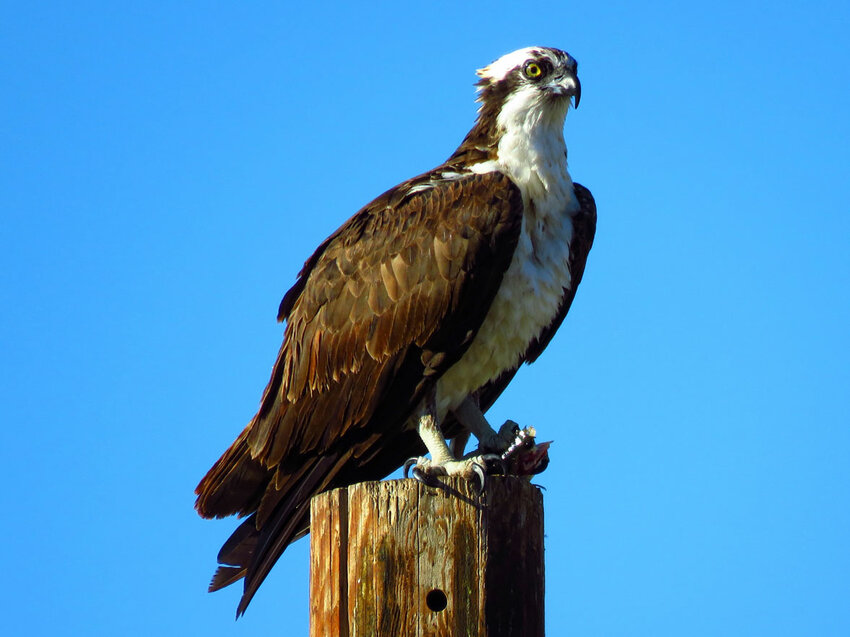
Photo courtesy Charles Martinez
This week’s Bird of the Week, compliments of the Weminuche Audubon Society and Audubon Rockies, is the osprey.
Melting ice on area lakes signals that it’s time to be on the lookout for osprey. Open water is essential for these hungry migrants that return from winter grounds as distant as South America and which feed almost exclusively on live fish.
Osprey hunt by gliding and hovering over water while watching for fish near the surface. Waterproof feathers and the abilities to protect their eyes with a third, translucent eyelid and to close their nostrils allow osprey to plunge into the water feet first, sometimes becoming completely submerged. Barbed pads on their feet and the ability to position two toes forward and two back allow them to hang onto slippery fish, which they position aerodynamically head first for flight back to the nest or perch.
Osprey require an open, elevated nest site like those provided by snags, tree tops or platforms built for them. A reliable source of fish within 12 miles must be available. Pairs may use the same nest and add to it for several years, ending up with one large enough to hold a person. From egg to fledgling takes 14 weeks and young may stay with parents two to three months after leaving the nest before becoming independent.
Osprey are large hawks with slender bodies; long, narrow wings; and long legs. They are colored a rich brown on the back and wings and white underneath. A broad, dark stripe goes through their eyes. Females are larger than males and show a mottled brown band across the breast.
You can follow the development of osprey from egg to fledgling on the webcam pointed at the nest platform at Lake Capote on lakecapote.com.
For information on events, visit www.weminucheaudubon.org and www.facebook.com/weminucheaudubon/.